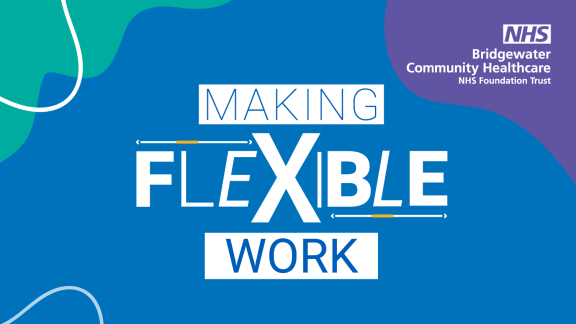Key points
Focussed action can improve retention.
To have the most impact, action should be data driven.
Tailor activity to ensure action is most effective.
Review and refresh your approach to retention on a regular basis.

In this briefing we share learning which will help organisations review and refresh their approach to staff retention. This will help support the NHS to provide high-quality care, reduce spending on agency staff and meet the aims outlined in the NHS Long Term Workforce Plan.
Overview
The retention of the NHS workforce has never been more critical. Current turnover levels contribute to poor staff experience and on their ability to provide high-quality patient care. The NHS Long Term Workforce Plan has identified improved retention levels as a key element of the workforce expansion plans. Improved retention is also key to improved staff experience, greater productivity and will help reduce costs through a reduction of agency spending.
This guide highlights some key actions that employers can take to improve retention.
- Download this chapter
- Overview
Actions which positively impact on retention actions
NHS Employers has recently reviewed the evidence base on retention and gathered intelligence from a range of employers that have reduced turnover in recent years such as the People Promise exemplars. This review has identified that focussed action can improve retention. Through improved staff experience, in areas such as flexible working and health and wellbeing support, turnover levels can be reduced.
Seven key actions which have the most impact.
- Have an overall strategic approach in which retention activity complements recruitment and is integrated with overall staff experience and people management.
- Understanding the nature of turnover through looking at all available data and shaping an evidence-based response.
- Exploring the issues which are leading people to actively consider leaving and wherever possible seeking ways to address these issues to encourage staff to stay.
- Organisational culture, especially at team level, has a key role with data-driven action. This should be focussed on the most challenged areas and support for line managers.
- Impactful interventions to improve staff experience, especially increased access to flexible working, improved health and wellbeing support, enhanced staff engagement activity and ensuring staff feel valued.
- Tackling issues of discrimination, bullying, harassment, and violence especially where they create a negative staff experience for staff with protected characteristics.
- Increased learning and development opportunities and enhanced induction, mentoring and preceptorship programmes for early career staff.
These interventions have had most impact where organisations have been able to find protected time and space to focus on retention and have applied interventions comprehensively and consistently.
- Download this chapter
- Actions which positively impact on retention actions
Understand the issue for an effective response
To have the most impact, action should be data driven. There is now a greater range of useful data on retention, including NHS England’s Model Health System which provides insightful trend and benchmark data on leavers, including their demographic and occupation data.
A detailed understanding of retention data at a local level is essential to take effective action. Turnover rates can be compared with NHS Staff Survey data , other national staff survey data, staff feedback, wider HR indicators and local level intelligence. This helps identify whether staff are thinking of leaving, the most challenged departments and areas of good practice which could be learned from. It’s important to evaluate the impact of initiatives and adapt solutions to tackle local issues and meet the needs of particular staff groups.
Listen to staff to better understand the reasons why they may be thinking of leaving. Use a range of tools to identify quick wins, which organisations can implement in short term. Feedback to colleagues on issues raised, even where it may not be possible to resolve them all immediately. For example, overall pay structure related issues need to be addressed at national levels, although local reward packages can assist with retention.
Wherever possible, talk with staff before they leave. Stay interviews are recommended in the NHS Long Term Workforce Plan, they can be a useful tool to understand the pull factors that help staff to stay in the organisation and the push factors that lead to them leaving. NHS Employers has produced a summary of approaches to retention discussions/stay conversations. Exit interviews with leavers are also an invaluable source of insight. The national exit survey has been enhanced in recent years and many trusts now supplement this with their own additional data collection.
- Download this chapter
- Understand the issue for an effective response
Tailored solutions
The relative importance of issues can vary by staff group, and it is therefore important to tailor activity to ensure action is most effective. Examples of tailored solutions:
- Flexible-working options have enabled more staff to stay in employment.
- Flexible retirement options have been especially effective for late career staff.
- Improved learning and development support has a greater impact when linked to the needs of different staff groups.
- Coaching and mentoring appears to have most impact on early career staff.
- Supporting staff who have negative work experience due to violence, bullying and harassment can have a positive impact on retention.
- Pastoral care and assistance with settling in to working in the UK is important for internationally recruited staff.
- Enhanced health and wellbeing support.
Turnover has fallen in recent months nationally but remains at historically high levels and significantly higher than pre COVID-19 pandemic levels. As noted in the NHS Long Term Workforce Plan, no single initiative will work on its own but where there are range of staff experience interventions, which implemented in a coherent and targeted way, do appear to have an impact. Evaluate the impact of your approach at both an overall and unit level and adapt as new issues emerge.
- Download this chapter
- Tailored solutions
Review and refresh your retention strategy
Review and refresh your approach to retention on a regular basis and remember to have a wide focus and consider the needs of different staff groups. Actions include:
- increase opportunities for stay conversations and improve signposting for issues that may lead to common leaver reasons
- digging into your data to identify the patterns of turnover in your organisation
- support line managers to identify and resolve issues that may lead staff to leaving
- enhance and extend listening approaches to better understand why staff are leaving
- implement impactful interventions to improve organisational culture and staff experience
- review your local approach to reward and recognition to link it to retention
- ensure your board regularly considers retention as part of overall service delivery discussions
- regularly evaluate the impact of your approach
- collaborate and share learning working with your integrated care system (ICS).
- Download this chapter
- Review and refresh your retention strategy
Retention results
Improved retention will create a virtuous circle boosting overall workforce numbers, helping staff to stay and thrive, reduce pressure on staff and enabling organisations to provide better care.
Improved staff experience will:
- reinforce retention and lower turnover
- help foster positive organisational cultures
- assist in the expansion of staff numbers as envisaged in the NHS Long Term Workforce Plan
- help reduce spending on bank and agency staff
- support improved productivity
- free up management time
- enable staff to stay and thrive.
- Download this chapter
- Retention results
Additional resources
This new retention board pack provides key facts, resources, and a summary of the areas NHS leaders may wish to explore to help their staff stay and thrive in the NHS. It also contains some critical questions that NHS leaders can ask themselves and their boards to help maintain a focus on retaining their people.
Our retention web pages highlight the key areas that we know contribute to providing good work and enabling retention. Our website has a host of resources already available to support you with this challenge, including a new resource on stay conversations.
- Download this chapter
- Additional resources


